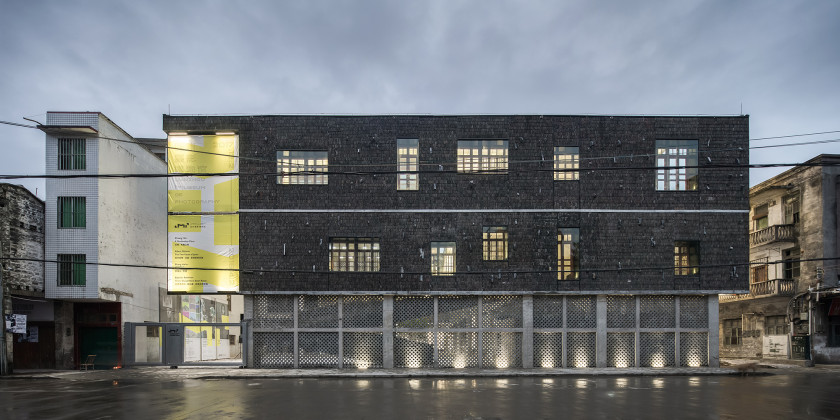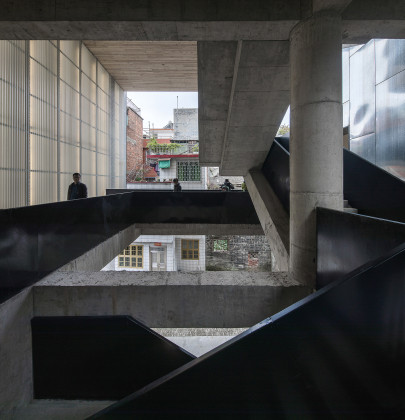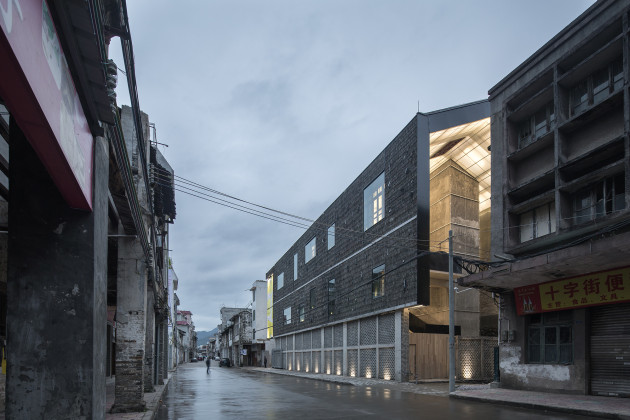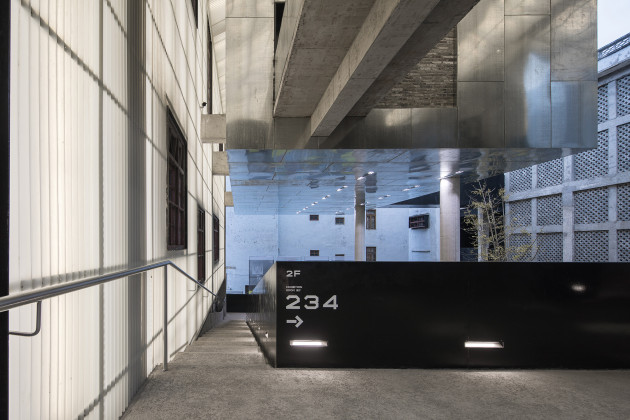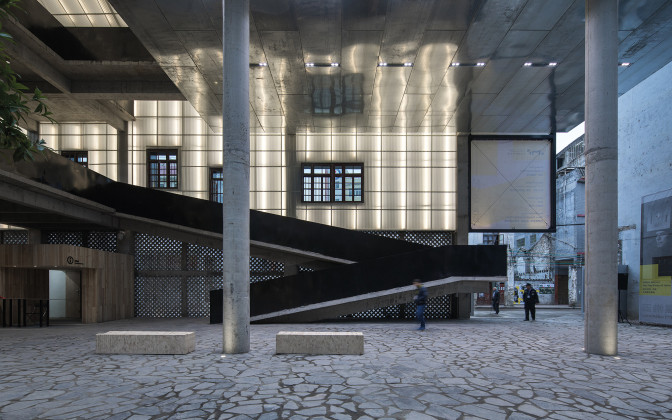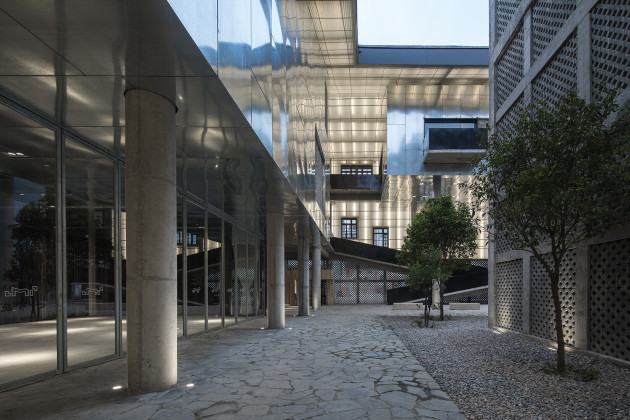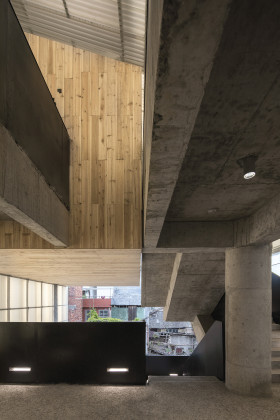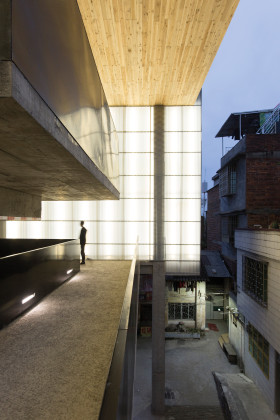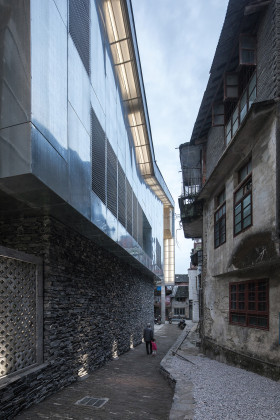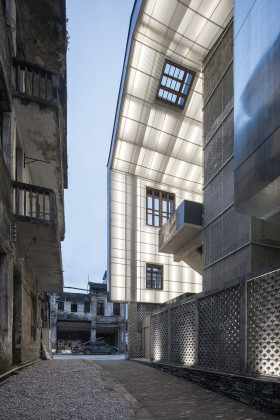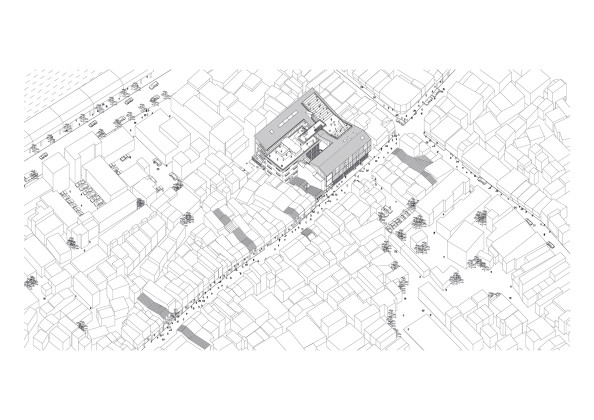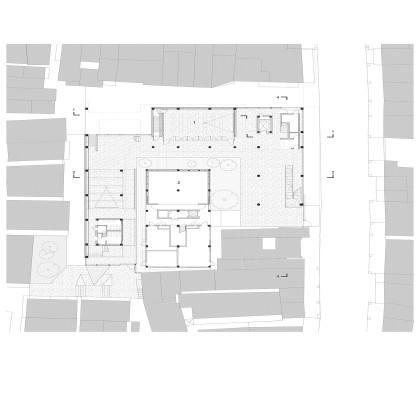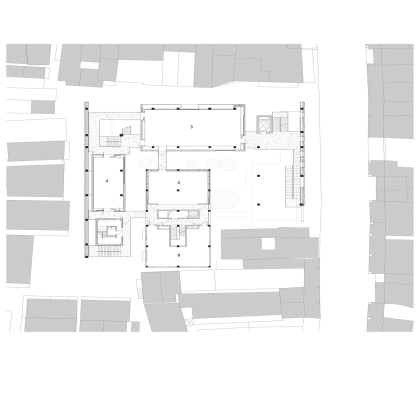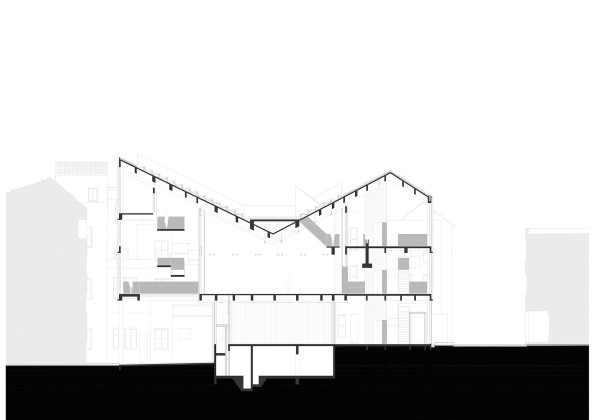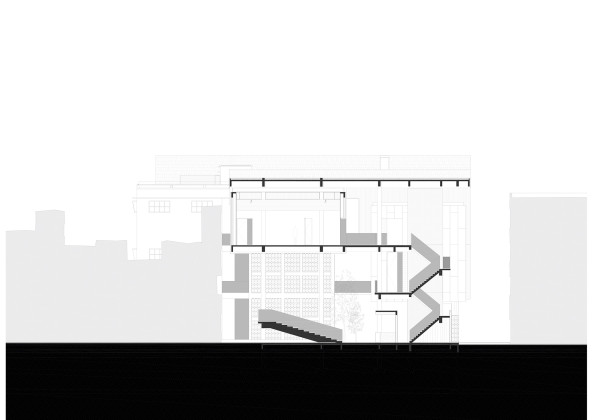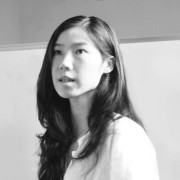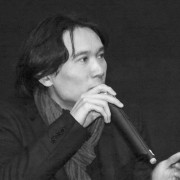Timeless Frame
Lianzhou Museum of Photography is willing to become the generator of the urban revitalization without losing touch with the past, merging the photographic experience with sceneries of the old city and everyday life
Lianzhou, a small city locates in the northern mountain area of Guangdong, has witnessed the miraculous 13 consecutive years of Lianzhou International Photography Festival, one of the most important photographic art events in China. Construction of the photography museum is considered as the generator of the old downtown’s revitalization plan, and at the same time, a tribute to the city’s past. Lianzhou Museum of Photography (LMP) was chosen to build in South Zhongshan Road, which local people cordially called "Old Street", a place full of local traditions and memories. The original site is an old candy warehouse which has been the main venue for the last 12 photo festivals.
LMP is comprised of two interlocking buildings, one preserved existing 3-story concrete-frame building, and one U-shape new building constructed on the spot of two demolished wooden structure buildings. A composed façade-roof canopy of the new building shapes the roof skyline of the museum, fully respecting the urban fabric of the old town. Below the successively folded slopes of the canopy area series of galleries, inter-linked by outdoor corridors, and staircases, with exhibitions and public events taking place under one roof. The preserved building and the new U-shape extension create a rich vertical variation of the interior of the building. The U-shape gap garden in-between keeps a distance and necessary contrast between the two structures.
The architect tries to break down the institutional and commemorative tradition of the museum into a three-dimensional exhibition tour that is co-existed with the old city’s morphology. Fragmented sceneries of the old city and everyday life have been juxtaposed to the experience of a journey of the serious and abstract modern photographic art, but sometimes sarcastic contemporary photographic art. On top of the façade-roof canopy, an open-air theater with a V-shape section sits right above the main exhibition hall, in connection with a steel terrace cantilevered from the preserved building’s flat-roof, forming the climax of the entire spatial tour of the museum.
Almost all of the construction materials come from local. Exterior surface of the continuous façade-roof canopy is composed of gray shingle collected from demolished old houses in urban and rural areas nearby mixed with local dark schist called the West Bank stone, which is also used on the ground floor and the supporting walls of basement level. A collection of wooden windows collected from the demolished warehouse building has been implanted to canopy structure. Facades of newly constructed exhibition boxes feature of traditional “white iron” (galvanized steel) skin mixed with old gray brick wall segments, inter-connected with concrete corridor’s and staircases armed with black steel railing panel. The only non-local industrial product, delicate soft and translucent PVC corrugated tile, is used on the inner surface of the thick and rustic façade-roof canopy. It brings a hint of warmth beyond the neutral-color architectural background (a basic requirement for photographic presentation)and, with LED lighting behind, provides a gentle soft light to the entire sheltered, and even indoor exhibition spaces.
 07.05.2018
07.05.2018



